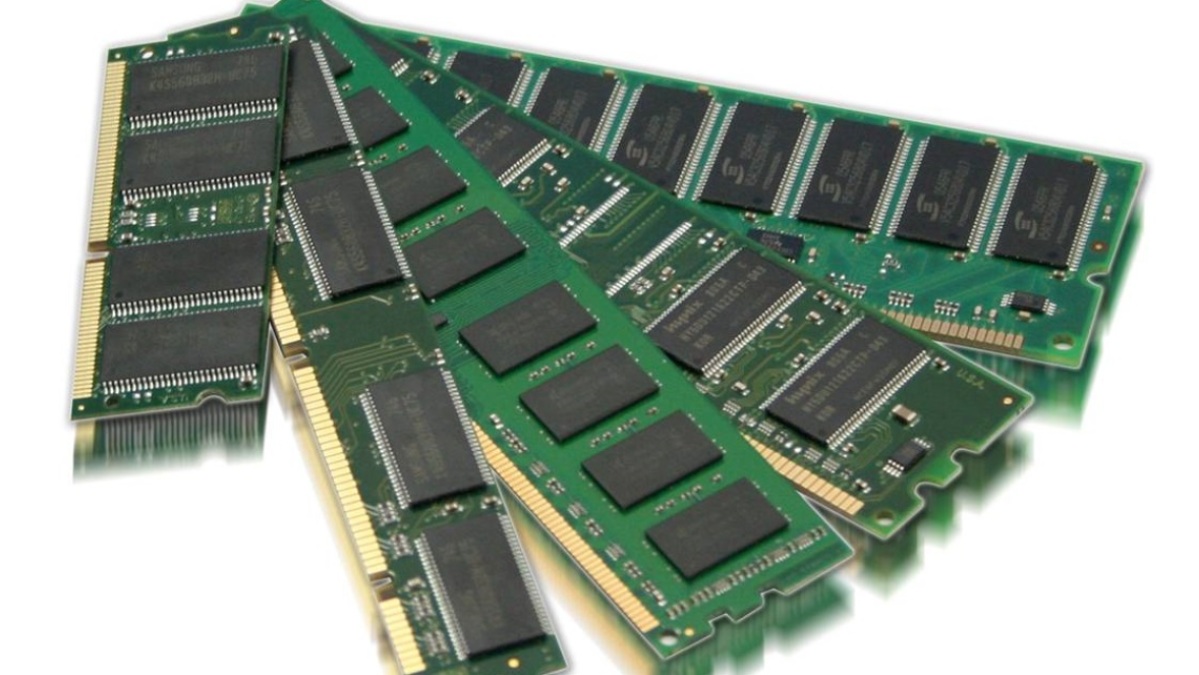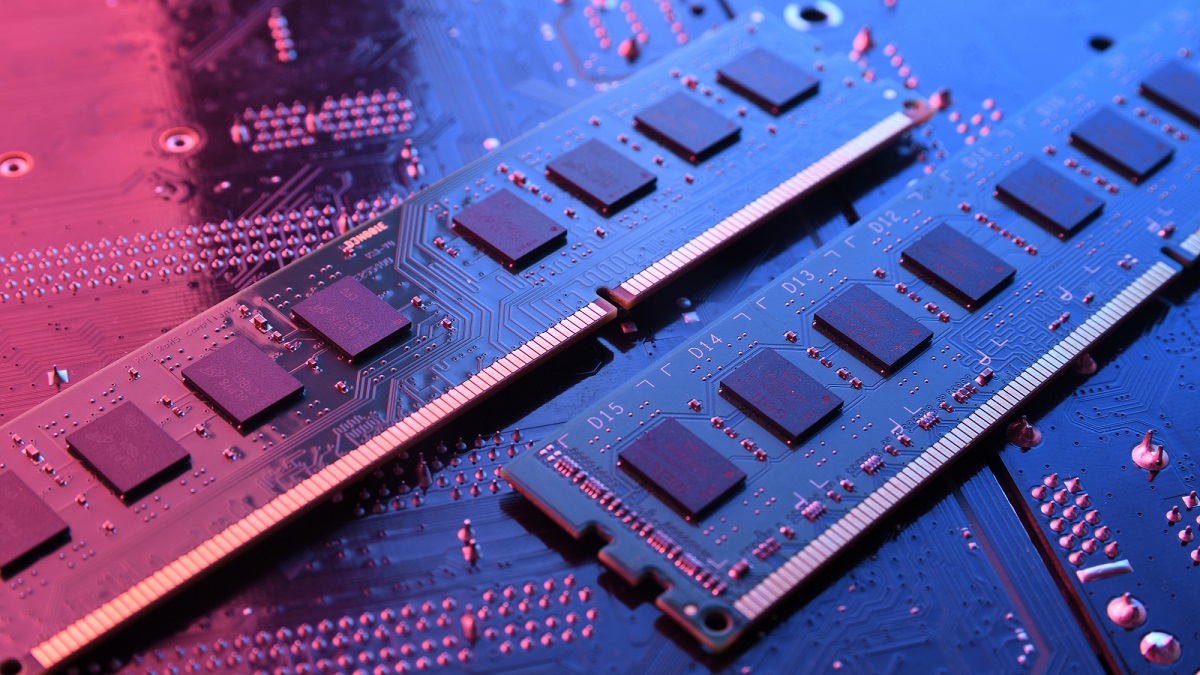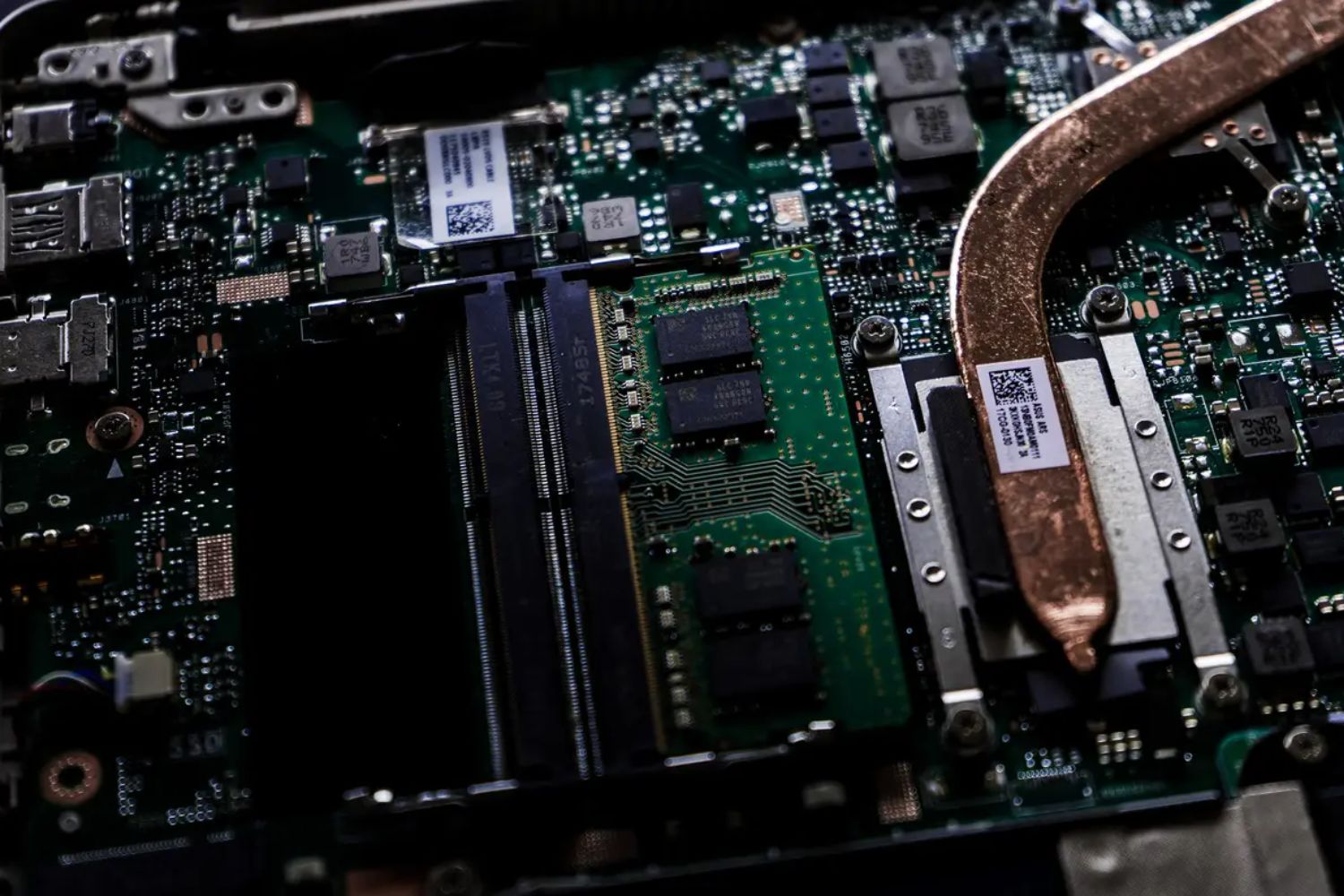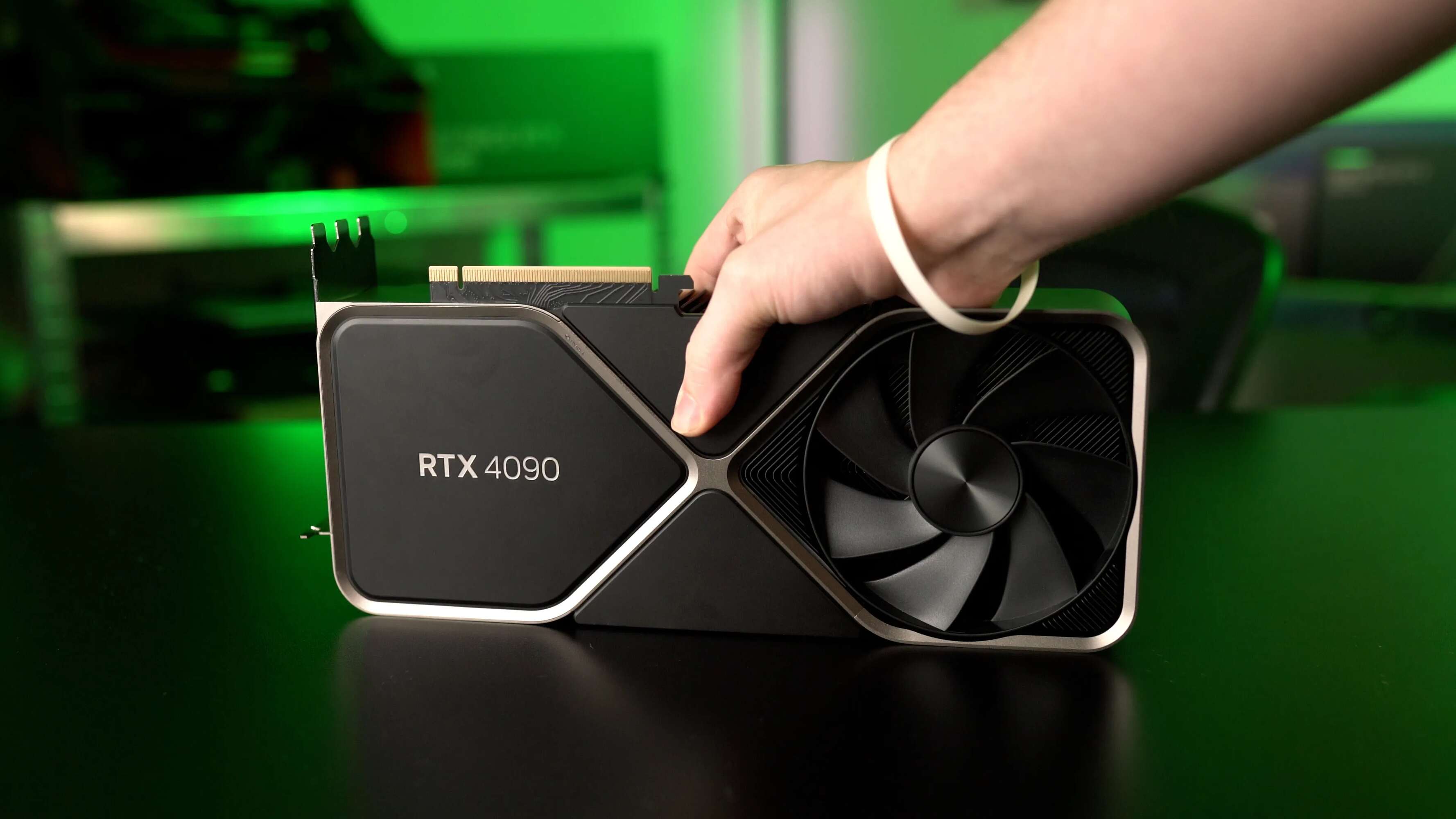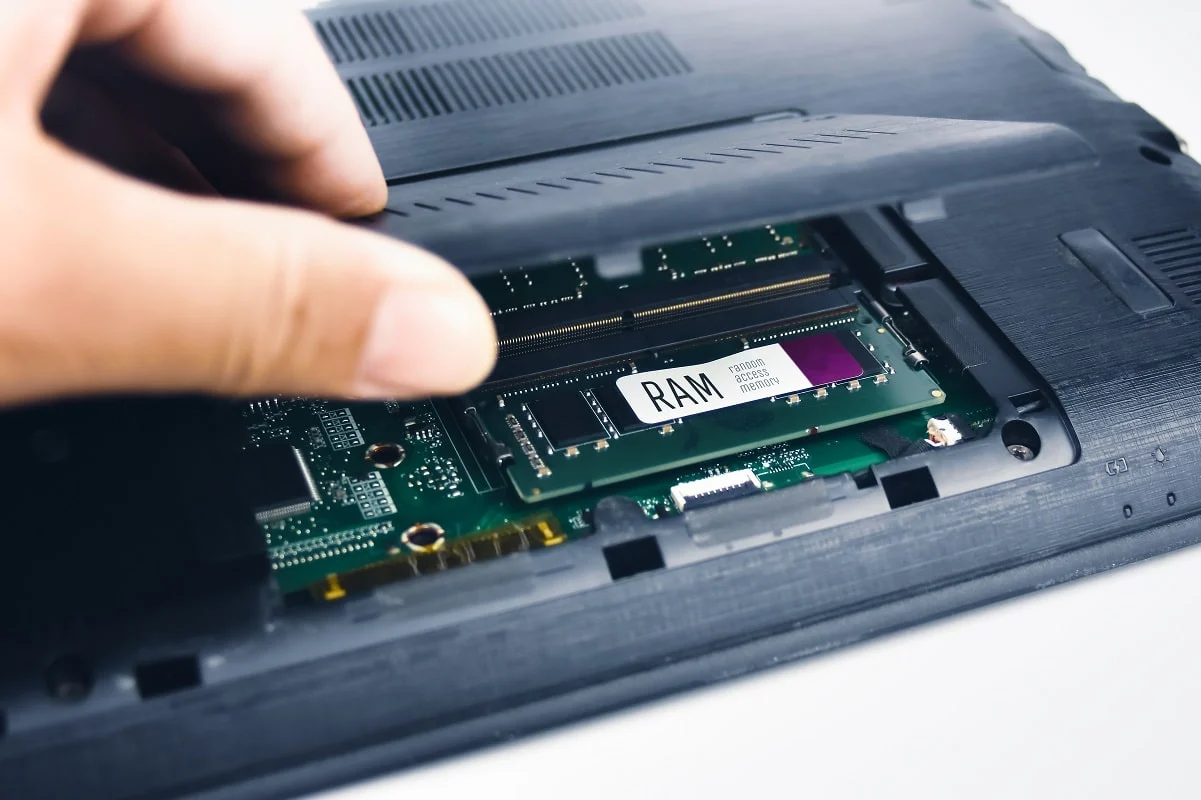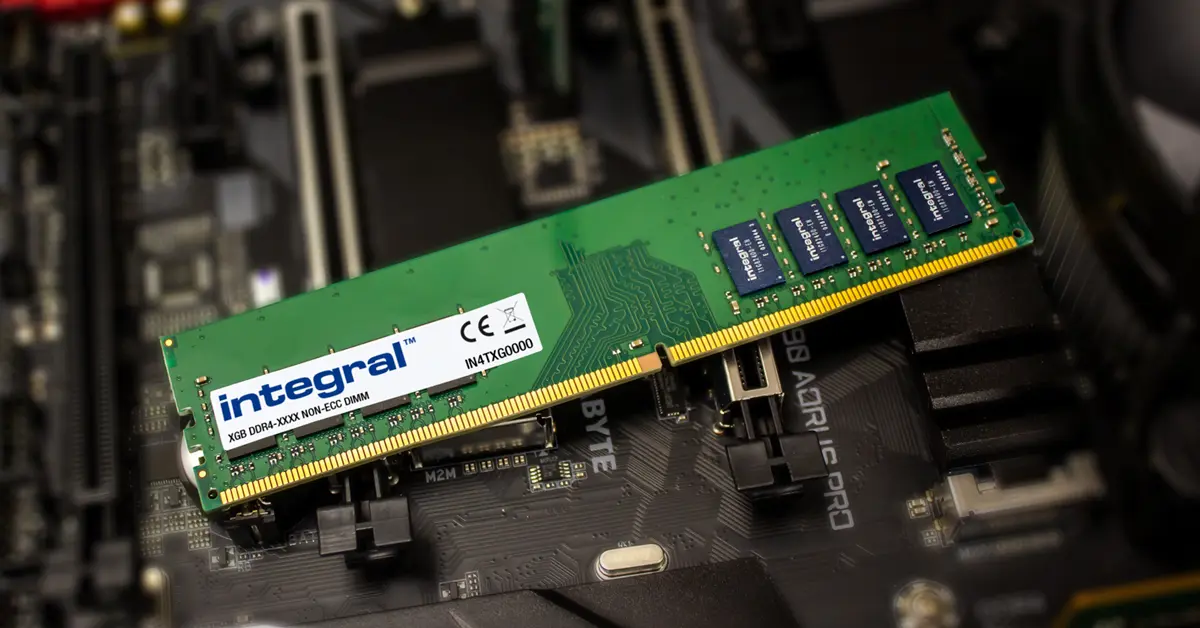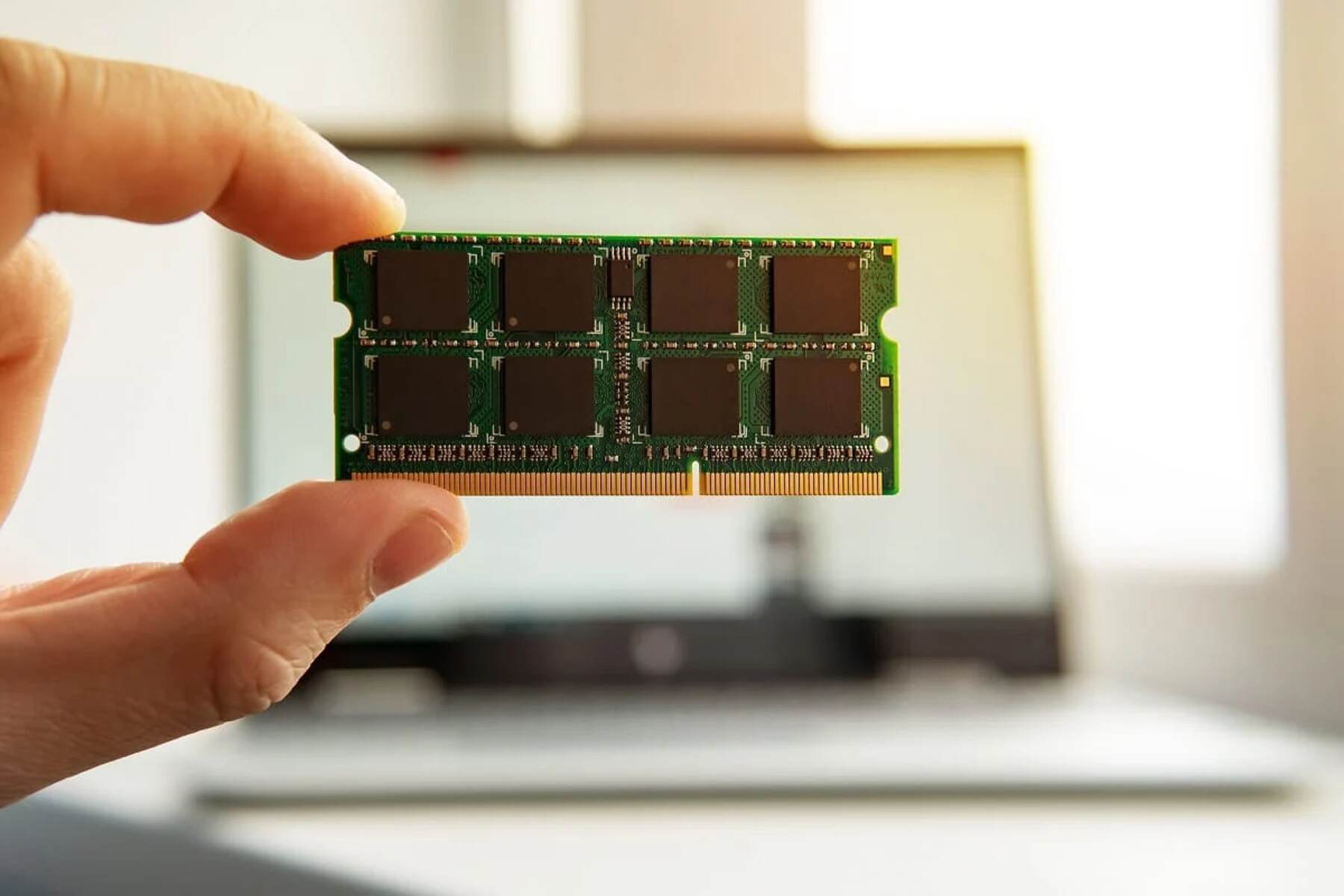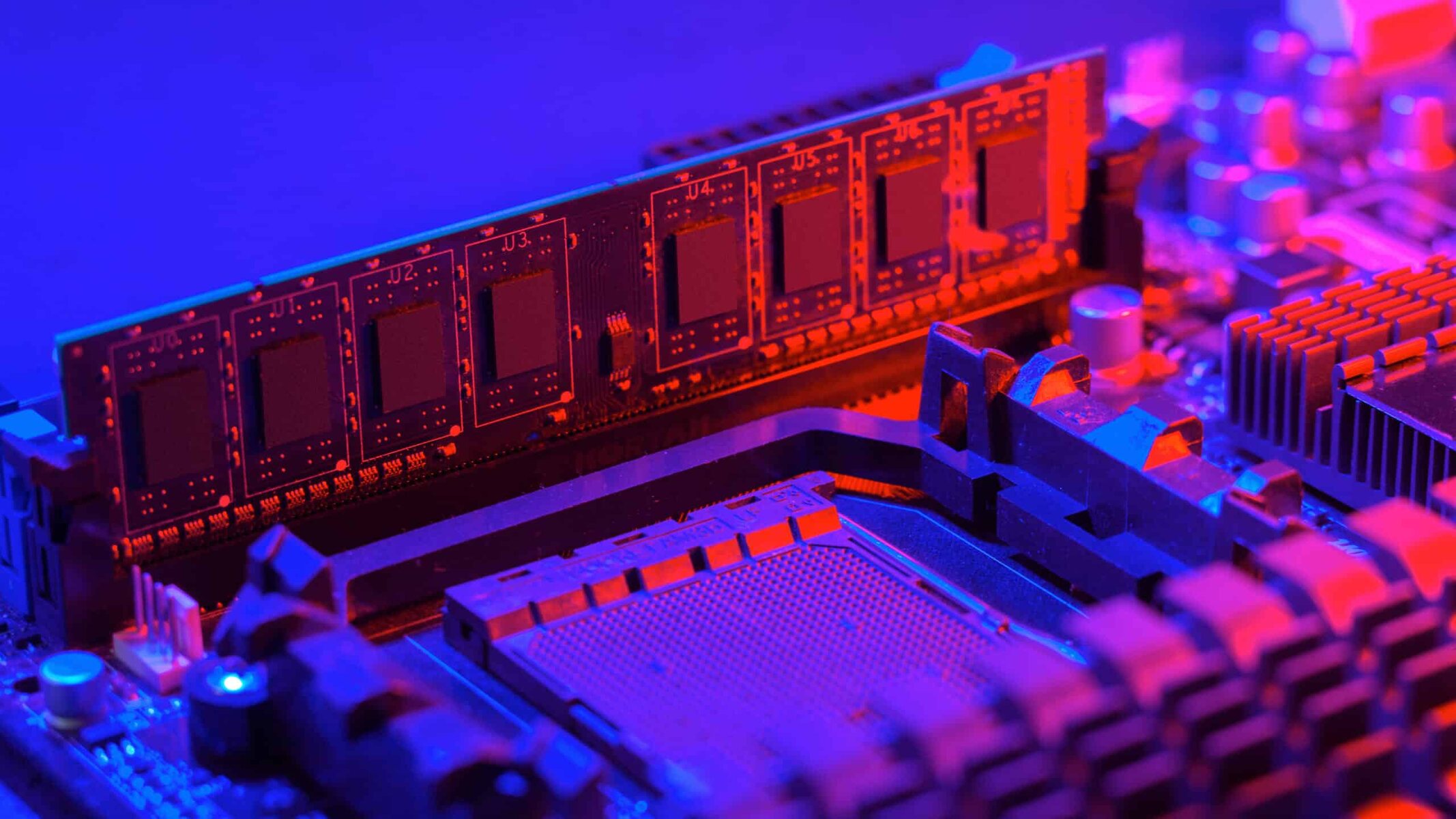Introduction
Welcome to the world of computers, where speed and performance are paramount. As you embark on your computer journey, you may have come across the term “RAM memory” and wondered what it is and how it affects your computer’s performance. Well, you’re in the right place. In this article, we will demystify RAM memory and help you determine how much of it you need to ensure your computer runs smoothly.
RAM, which stands for Random Access Memory, is a crucial component of every computer system. It is the temporary storage space that your computer uses to store and access data that is currently being used by running programs. Think of it as your computer’s short-term memory that allows it to quickly access and work with data, improving overall performance.
Your computer’s RAM plays a vital role in multitasking, as it determines how many programs and tasks can be simultaneously run without significant slowdowns. In other words, the more RAM you have, the more data your computer can hold in its short-term memory, reducing the need to rely on slower storage devices like hard drives or solid-state drives (SSDs).
When your computer runs out of available RAM, it starts using a portion of your computer’s storage device as a substitute, known as virtual memory. However, since storage devices are slower than RAM, this can lead to a decrease in performance and a phenomenon known as “swapping” or “thrashing,” where the computer has to constantly move data between RAM and the storage device.
Now that we have a basic understanding of RAM memory and its importance, let’s delve into the factors that can help you determine how much RAM you need for your specific needs.
What is RAM memory?
RAM, or Random Access Memory, is a type of computer memory that provides temporary storage space for data that is actively being used by a computer’s operating system, software, and applications. It is often referred to as the computer’s “short-term memory”. Unlike permanent storage devices like hard drives or SSDs, RAM is volatile, meaning that its contents are lost when the computer is turned off or restarted.
RAM plays a crucial role in determining the overall performance and responsiveness of a computer system. Whenever you open a program or run an application, the necessary data is loaded into RAM. This allows the processor to quickly access and manipulate the data without having to retrieve it from a slower storage device. The more RAM your computer has, the more data it can store in its short-term memory, which improves multitasking capabilities and reduces the need for constant data retrieval from the hard drive or SSD.
RAM memory is accessed randomly, meaning that any piece of data stored in RAM can be retrieved and processed directly, regardless of its location. This is in contrast to sequential access, where data has to be accessed in a specific order. Random access allows for faster and more efficient data retrieval, making RAM a vital component in modern computer systems.
RAM is available in different capacities, typically measured in gigabytes (GB) or terabytes (TB). The amount of RAM you need depends on various factors such as the type of tasks you perform on your computer, the complexity of the software or applications you use, and your overall usage patterns. For basic tasks like web browsing and document editing, a few gigabytes of RAM may be sufficient. However, if you’re working with resource-intensive software, such as video editing or 3D modeling applications, you may need significantly more RAM to ensure smooth and efficient performance.
It is important to note that RAM is separate from the computer’s permanent storage, such as the hard drive or SSD. While these storage devices store your files, documents, and installed software, RAM is responsible for storing the data that is actively being used by the computer’s processes. RAM allows for quick access to this data, improving the overall speed and efficiency of your computer system.
How does RAM affect your computer’s performance?
RAM (Random Access Memory) is a crucial component that directly impacts your computer’s performance. The amount of RAM your computer has can significantly affect its ability to handle multiple tasks, run demanding software, and deliver a smooth and responsive user experience.
When you open a program or run an application, the necessary data is loaded into RAM to allow the processor to quickly access and manipulate it. The more RAM your computer has, the more data it can hold in its short-term memory, reducing the need to retrieve data from slower storage devices like hard drives or SSDs. This means that with ample RAM, your computer can process data faster, resulting in improved performance and responsiveness.
RAM is particularly important for multitasking. If you frequently have multiple programs or applications open simultaneously, each one requires a certain amount of RAM to function properly. Insufficient RAM can cause your computer to slow down or even freeze as it struggles to allocate memory for each task. On the other hand, having enough RAM allows your computer to smoothly run multiple programs without performance degradation.
Furthermore, RAM plays a crucial role in gaming and resource-intensive software. Video games, for example, often require a significant amount of RAM to store and load game data, textures, and other assets in real-time. Insufficient RAM in gaming can lead to lag, stuttering, and longer loading times. Similarly, professional software like video editing, 3D modeling, or graphic design applications utilize large amounts of RAM to efficiently manipulate complex data and render high-resolution content.
RAM also contributes to overall system stability. When your computer runs out of available RAM, it starts using virtual memory, which is a portion of your computer’s storage device used as temporary memory. However, virtual memory is slower than RAM, causing your computer to rely more heavily on the hard drive or SSD. This can result in slower performance and decreased system stability, especially if the virtual memory usage is excessive.
In summary, RAM memory significantly impacts your computer’s performance and usability. It allows for faster data access, smoother multitasking, improved gaming experiences, and enhanced performance in resource-intensive software. It is crucial to have enough RAM to meet your specific needs and ensure that your computer operates optimally.
Factors to consider when determining how much RAM you need
Determining the amount of RAM (Random Access Memory) you need for your computer involves considering several important factors. By understanding these factors, you can make an informed decision and ensure that your computer has enough RAM to meet your specific requirements. Here are some key considerations:
- Usage Patterns: Consider how you use your computer on a day-to-day basis. Are you primarily engaged in basic tasks like web browsing, email, and document editing? Or do you frequently work with resource-intensive applications, such as video editing, 3D modeling, or virtualization software? Tasks that require higher processing power and memory, such as gaming or running multiple virtual machines, will typically benefit from having more RAM.
- Software Requirements: Take into account the minimum and recommended system requirements for the software applications you use. Some software, especially resource-intensive applications like video editing or gaming software, may have specific RAM requirements to operate optimally. Ensure that your computer meets or exceeds the recommended RAM specifications for such software to avoid performance issues.
- Operating System Requirements: Different operating systems have varying RAM requirements. For example, newer versions of Windows or macOS may recommend higher RAM capacities to ensure smooth operation. Consider the operating system you use and check the recommended RAM specifications to ensure compatibility and optimal performance.
- Future Proofing: It is advisable to consider your future needs when determining the amount of RAM you need. Technology is constantly evolving, and software applications are becoming more resource-intensive over time. By choosing a higher RAM capacity now, you can future-proof your computer and ensure it can handle more demanding tasks and software upgrades without the need for immediate hardware upgrades.
- Budget: RAM prices can vary based on capacity and other factors. Consider your budget when deciding how much RAM to purchase. While more RAM is generally better for performance, it’s important to strike a balance between your budget and your computing needs.
Keep in mind that these factors are not exhaustive, and individual requirements may vary. It is always a good idea to do thorough research, consult technical specifications, and seek expert advice if needed to determine the ideal amount of RAM for your specific use case.
RAM recommendations for different types of users
The amount of RAM (Random Access Memory) needed for optimal performance can vary based on your specific use case. Here are some RAM recommendations for different types of users:
- Basic Users: If you primarily use your computer for basic tasks like web browsing, email, document editing, and multimedia streaming, a minimum of 4GB RAM is typically sufficient. However, to ensure smoother multitasking and better overall performance, consider upgrading to 8GB or even 16GB of RAM.
- Students and Office Workers: If you’re a student or an office worker who often works with productivity software like Microsoft Office or Google Workspace, along with web browsing and multitasking, 8GB to 16GB of RAM is recommended. This will provide enough memory to handle multiple open applications and ensure smooth performance.
- Content Creators: If you work with resource-intensive applications like video editing software (Adobe Premiere Pro, Final Cut Pro), graphic design software (Adobe Photoshop, Illustrator), or 3D modeling software (Autodesk Maya, Blender), consider upgrading to at least 16GB of RAM. These applications require substantial memory for processing large files and complex tasks.
- Gamers: Gaming enthusiasts should aim for a minimum of 16GB of RAM to ensure a smooth gaming experience. Many modern games require a significant amount of memory to load and render high-resolution textures and assets. For optimal performance, especially with demanding titles, consider upgrading to 32GB or more of RAM.
- Programmers and Developers: If you’re involved in software development, running virtual machines, or working with resource-intensive programming environments, such as IDEs (Integrated Development Environments) or server setups, consider a minimum of 16GB to 32GB of RAM. This will provide ample memory for running multiple applications and virtual environments simultaneously.
It’s important to note that these recommendations are general guidelines, and individual requirements may vary depending on specific software usage, multitasking needs, and future scalability. Always refer to the system requirements of the software you use and consider factors like budget and future-proofing when determining the ideal amount of RAM for your needs.
Understanding the minimum and recommended system requirements for software and games
When it comes to software applications and games, understanding the minimum and recommended system requirements is crucial for ensuring optimal performance. These requirements outline the hardware specifications, including RAM, that are necessary to run the software or game smoothly. Here’s what you need to know:
Minimum System Requirements: The minimum system requirements specify the bare minimum hardware configuration necessary to run the software or game. While the software may technically run with these specifications, it may not perform optimally. The minimum RAM requirement listed is the minimum amount of memory that the software or game needs to function properly, albeit with potentially reduced performance or limited functionality. It’s advisable to have at least the minimum RAM specified to ensure the software or game runs smoothly.
Recommended System Requirements: The recommended system requirements represent the ideal hardware configuration for optimal performance. Meeting these requirements ensures smooth operation and may provide improved graphics, faster load times, and enhanced overall user experience. The recommended RAM specification is the amount of memory needed to run the software or game without any performance issues.
Both minimum and recommended system requirements can vary depending on the complexity and resource demands of the software or game. Resource-intensive applications like video editing software, 3D modeling software, or games with advanced graphics and physics engines often require higher RAM capacities for optimal performance.
When considering system requirements, it’s important to note that other hardware components, such as the processor, graphics card, and storage devices, also play a role in overall performance. Therefore, if a software or game has higher RAM requirements, it’s likely that other components may also need to meet or exceed the recommended specifications to ensure a smooth experience.
It’s essential to check the system requirements for the specific software or game you intend to use. Software developers and game publishers typically provide detailed system requirements on their official websites or product documentation. By ensuring your computer meets or exceeds the recommended specifications, including RAM, you can enjoy the software or game at its best performance level.
Remember to consider future software updates and expansions that may increase the system requirements. Upgrading to a higher RAM capacity, if needed, can help future-proof your system and ensure continued compatibility with the latest software releases.
Upgrading your RAM
If you find that your current RAM configuration is limiting your computer’s performance or it doesn’t meet the recommended system requirements for the software you use, upgrading your RAM can be a cost-effective solution. Here’s what you need to know about upgrading your RAM:
Check Compatibility: Before upgrading your RAM, ensure that the new RAM modules are compatible with your computer’s motherboard. Check the motherboard’s specifications or consult the manufacturer’s website to determine the type, speed, and maximum capacity of RAM supported. Additionally, consider factors like DDR (Double Data Rate) version and whether your computer requires ECC (Error-Correcting Code) RAM for stability and data integrity.
Identify Current Configuration: Determine the number of RAM slots available in your computer and the capacity of each occupied RAM module. This will help you understand how much and what type of RAM you need to purchase. You can check this information in your computer’s BIOS or use system information tools like CPU-Z or Speccy.
Determine Capacity and Speed: Consider your specific needs and budget when determining the capacity and speed of the new RAM modules. For most users, upgrading to 8GB or 16GB of RAM is usually sufficient. However, if you work with resource-intensive applications or perform heavy multitasking, consider 32GB or even higher capacities. Additionally, choose RAM modules with a speed that matches or exceeds the speed of your current RAM modules to ensure compatibility.
Install the New RAM: To upgrade your RAM, power off your computer and disconnect the power source. Locate the RAM slots on your motherboard and gently insert the new RAM modules, ensuring they are properly aligned with the notches. Apply equal pressure to both ends of the module until it clicks into place. Once inserted, power on your computer and verify that the new RAM is recognized by checking the BIOS or system information tools.
Test and Verify Performance: After installing the new RAM, it’s essential to test and verify its stability and performance. Run memory-intensive tasks or benchmarking software to ensure that the system remains stable and that the new RAM is providing the expected performance boost. If you encounter any issues, double-check the compatibility and seating of the RAM modules or consider seeking professional assistance.
Consider Professional Installation: If you are unsure about the upgrade process or uncomfortable working with computer hardware, it’s recommended to seek professional assistance. Computer technicians can ensure proper installation, troubleshoot any issues, and provide guidance on the best RAM upgrade options for your specific needs.
Upgrading your RAM can significantly improve your computer’s performance and enhance your overall computing experience. With careful consideration of compatibility, capacity, and speed, you can select the right RAM modules and enjoy smoother multitasking, better gaming experiences, and increased productivity.
Tips to optimize your RAM usage
While upgrading your RAM can provide a significant performance boost, there are also several ways to optimize your existing RAM usage to maximize its efficiency. By following these tips, you can ensure that your computer utilizes its available RAM effectively:
- Close Unnecessary Programs: Close any programs or applications that are running in the background but not actively in use. This frees up valuable RAM for other tasks, allowing your computer to allocate more resources where they’re needed.
- Disable Startup Programs: Review and disable any unnecessary programs that automatically launch upon startup. These programs consume valuable RAM even when they’re not actively being used, so disabling them can free up resources and improve overall performance.
- Manage Browser Tabs and Extensions: Limit the number of open tabs in your web browser, as each tab consumes a portion of your computer’s RAM. Additionally, remove or disable unnecessary browser extensions that can use up system resources.
- Clear Temporary Files: Regularly clean up temporary files, cache, and unnecessary system files. These files can accumulate over time and take up valuable disk space and RAM. Use cleanup tools or the built-in disk cleanup utility to remove these files and optimize your system.
- Reduce Visual Effects: Adjust the visual effects settings of your operating system to reduce the strain on your RAM. Disabling or reducing animations, transparency effects, and other visual enhancements can free up system resources for more critical tasks.
- Monitor Resource Usage: Utilize built-in task managers or third-party software to monitor the resource usage of your system. This allows you to identify programs or processes that are consuming excessive amounts of RAM and take appropriate action, such as closing the offending applications or investigating potential memory leaks.
- Manage Virtual Memory: If your computer frequently relies on virtual memory (pagefile), consider adjusting the virtual memory settings to ensure optimal performance. Assigning a fixed size to the virtual memory can help prevent excessive swapping between RAM and storage devices.
- Regularly Update Drivers: Outdated or incompatible drivers can contribute to poor system performance and RAM usage. Regularly update your drivers to ensure compatibility, stability, and optimal performance.
- Keep Your System Updated: Install the latest operating system updates, patches, and security fixes. Software updates often include performance optimizations and bug fixes that can improve overall RAM usage and system efficiency.
By following these tips, you can optimize the usage of your existing RAM and ensure that your computer runs smoothly, efficiently, and with maximum performance.
Conclusion
RAM memory is a crucial component that directly impacts the performance and responsiveness of your computer. Understanding how RAM works, its role in multitasking, and the factors to consider when determining how much RAM you need are essential in ensuring optimal system performance.
By considering your usage patterns, software requirements, and future needs, you can determine the ideal amount of RAM for your specific use case. Whether you’re a basic user, a gamer, a content creator, or a programmer, having the right amount of RAM can significantly enhance your computing experience.
Upgrading your RAM is a viable option if your current configuration is limiting your computer’s performance. By checking compatibility, identifying your current configuration, and selecting the appropriate RAM capacity and speed, you can enjoy smoother multitasking, improved gaming experiences, and better performance in resource-intensive applications.
In addition to upgrading your RAM, optimizing your existing RAM usage through practices like closing unnecessary programs, disabling startup programs, managing browser tabs, and monitoring resource usage can help maximize the efficiency of your available RAM.
Stay informed about the minimum and recommended system requirements for the software and games you use. Upgrading your RAM to meet or exceed these specifications will ensure optimal performance and compatibility as software becomes more resource-intensive over time.
Remember to check for compatibility, follow proper installation procedures, and test the stability and performance of your upgraded RAM. If needed, seek professional assistance to ensure a smooth upgrade process.
In conclusion, RAM memory is a critical component for overall system performance, and understanding its importance, upgrading when necessary, and optimizing usage can greatly enhance your computer’s capabilities, allowing for seamless multitasking, improved productivity, and an enhanced user experience.







